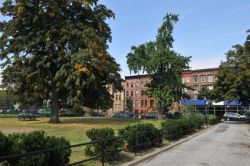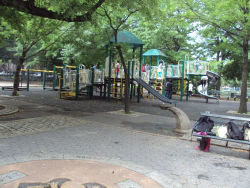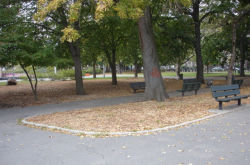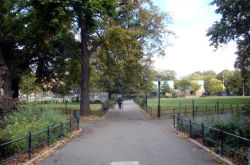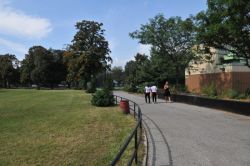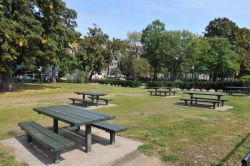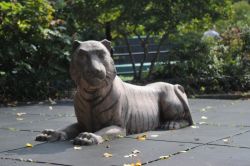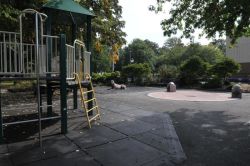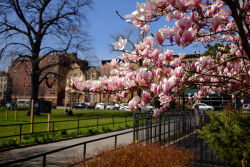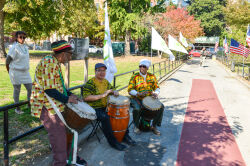Herbert Von King Park
Almira Kennedy Coursey Amphitheatre
What was here before?
This amphitheatre is part of Herbert Von King Park. The land was once part of the estate of Tunis Johnson (1838-1912) who made his fortune in the leather trade. He was one of the largest landowners in Kings County and the grandson of the third Mayor of Brooklyn, General Jeremiah Johnson (1766-1852).
How did this become an amphitheatre?
Acquired in 1857 by condemnation, this park was one of the first established by the City of Brooklyn and was originally named for Daniel D. Tompkins, who served as governor of New York (1807-17) and as vice president of the United States under James Monroe (1817-25). In 1871, the plan for the park was submitted by Calvert Vaux and Frederick Law Olmsted, designers of Prospect and Central Parks.
In 1969, the Tompkins Park Recreation and Cultural Association mobilized to improve park facilities, one of which was a new recreation center. Opened in 1973, the building houses this amphitheatre, a senior citizen and teen center, and an auditorium named after famed 20th century African American composer and musician of ragtime and jazz music, Eubie Blake. In the auditorium, a mural by artist Akwesi M. Asante depicts 50 African Americans icons, including Fredrick Douglas, Mayor David Dinkins, and the Jackson Five.
Who is this amphitheatre named for?
This amphitheatre is named in honor of Almira Kennedy Coursey (1914-1996), who lived a life of service and devotion to her community.
Born in New Bern, North Carolina, Almira Kennedy attended school in Winston-Salem and graduated from Saint Augustine’s College in 1934. Her formative college experience led her to a career in education. She served briefly as the Assistant Dean of Women at Saint Augustine’s before she began teaching in Clayton, North Carolina. She was particularly interested in women’s education and started a program for teenage girls called the ‘Three Ws Program’. The ‘Three Ws’ signified ‘Fine Womanhood’, ‘Wholesome Recreation’ and ‘Willingness to Serve’.
In the late 1940’s, she moved to Bedford-Stuyvesant, where she met Henry Ellis Coursey (d. 1968) with whom she raised three children. She taught at Macon Junior High School while earning a master’s degree in student personnel administration at Teacher’s College. In 1968, she served as special assistant to the vice chancellor of the City University of New York where she developed programs to assist minority students. She worked with many advocacy groups in her surrounding neighborhood, received numerous awards, and served on several city-wide committees on poverty and education under Mayors Robert F. Wagner Jr. (1910-1991) and John V. Lindsay (1921-2000).
As one of the leaders of the Tompkins Park Recreation and Cultural Association, Coursey was instrumental in the renovations of this park, including the establishment of the Eubie Blake Auditorium and the construction of the nearby Kosciusko Pool. The naming of the amphitheatre was proposed by the Tompkins Park Recreation and Cultural Association and endorsed by Council Member Albert Vann and Community Board 3.
Check out your park's Vital Signs
Clean & Safe
Green & Resilient
Empowered & Engaged Users
Share your feedback or learn more about how this park is part of a
Vital Park System

